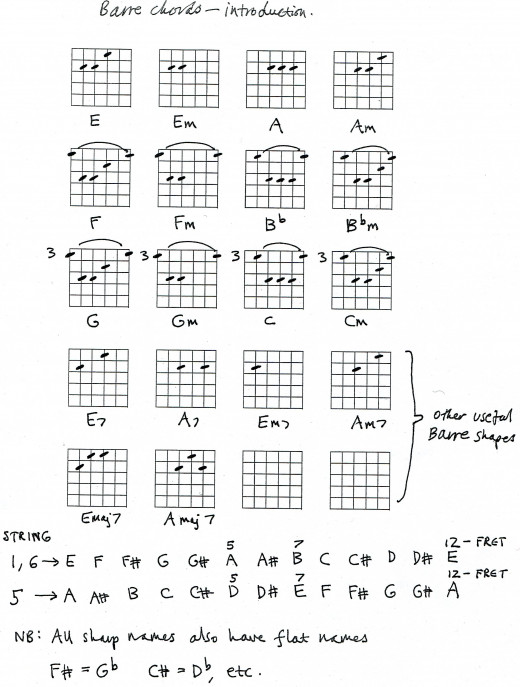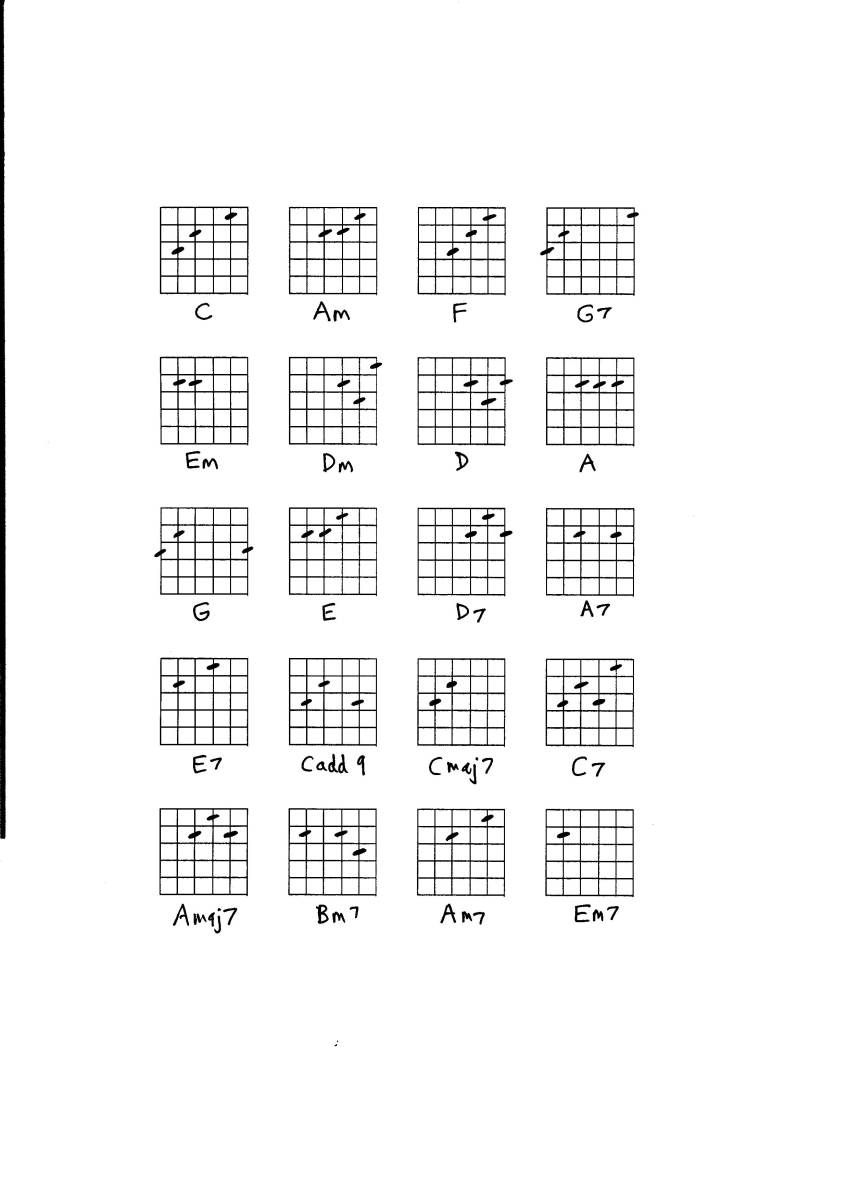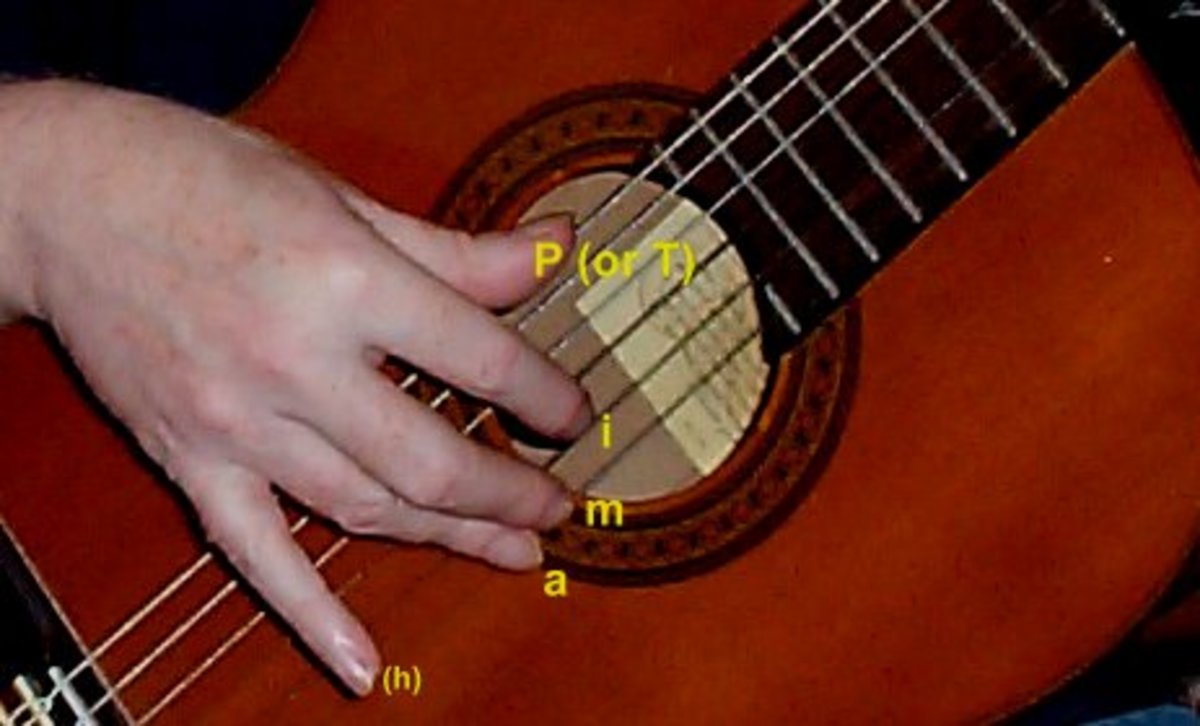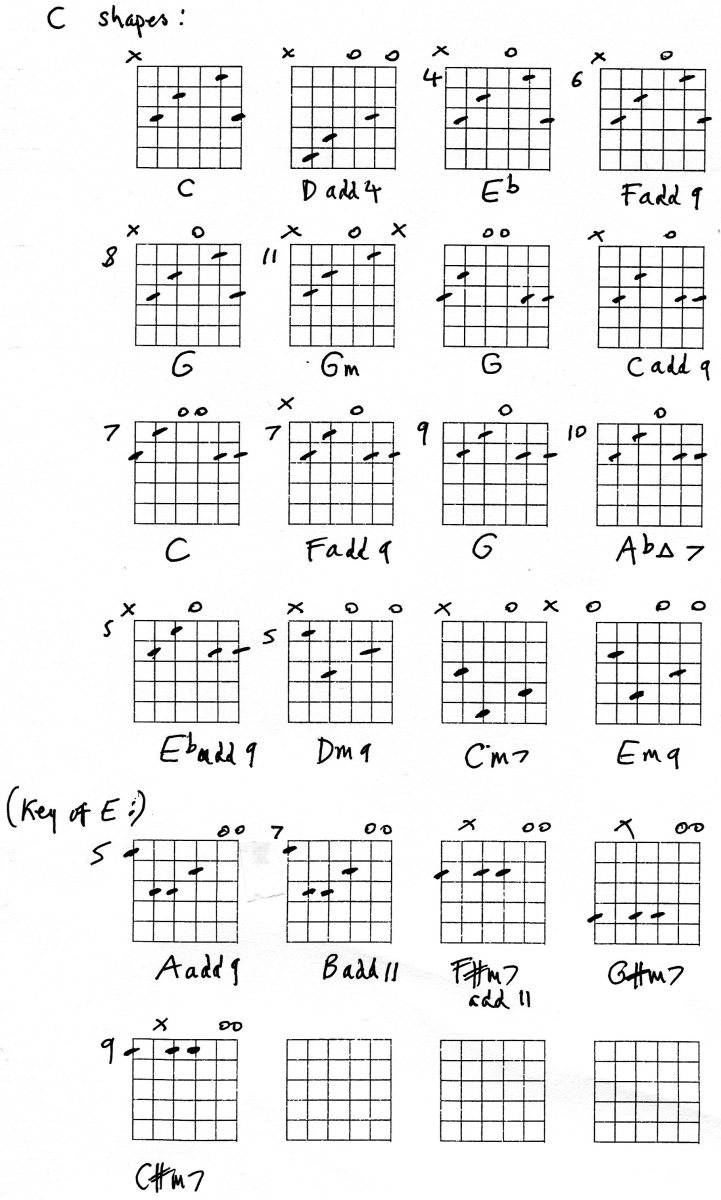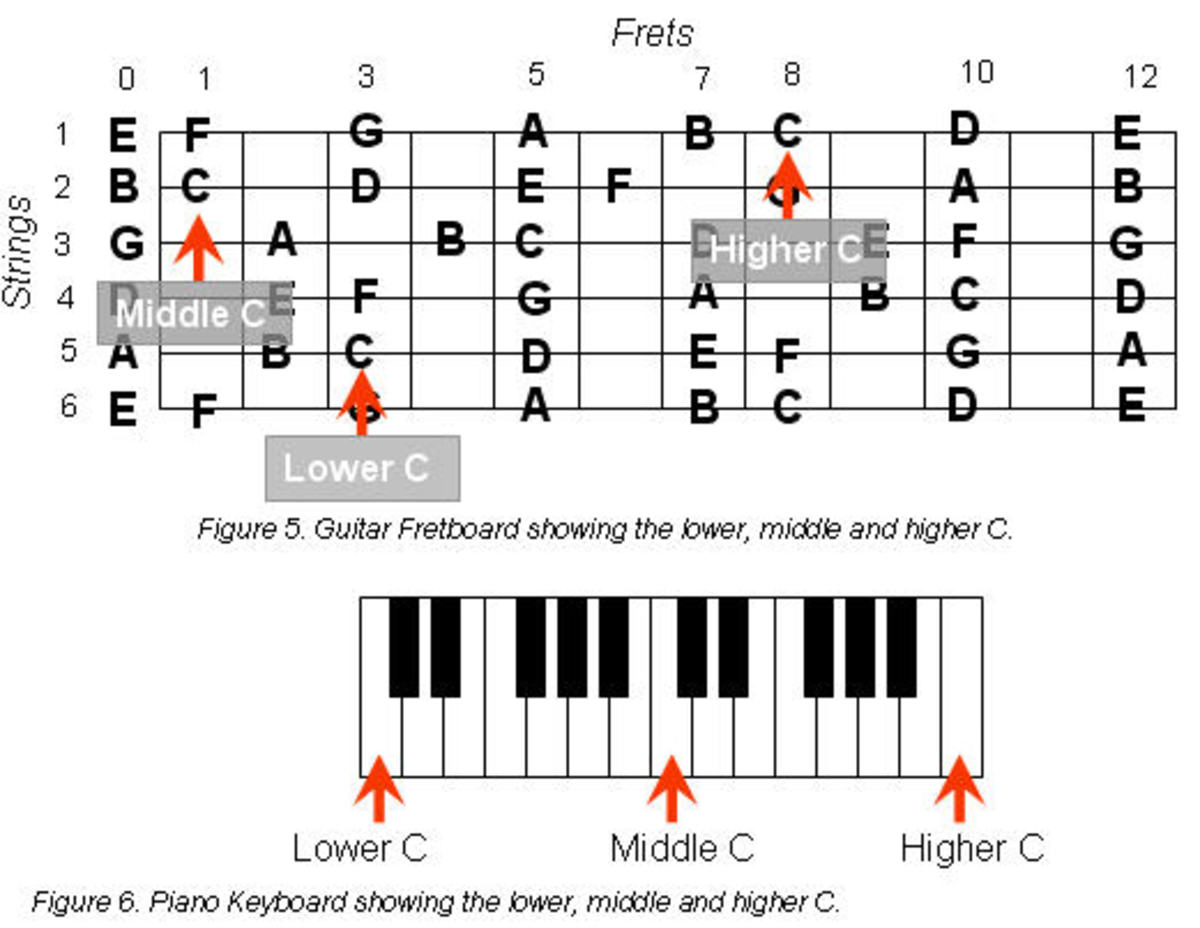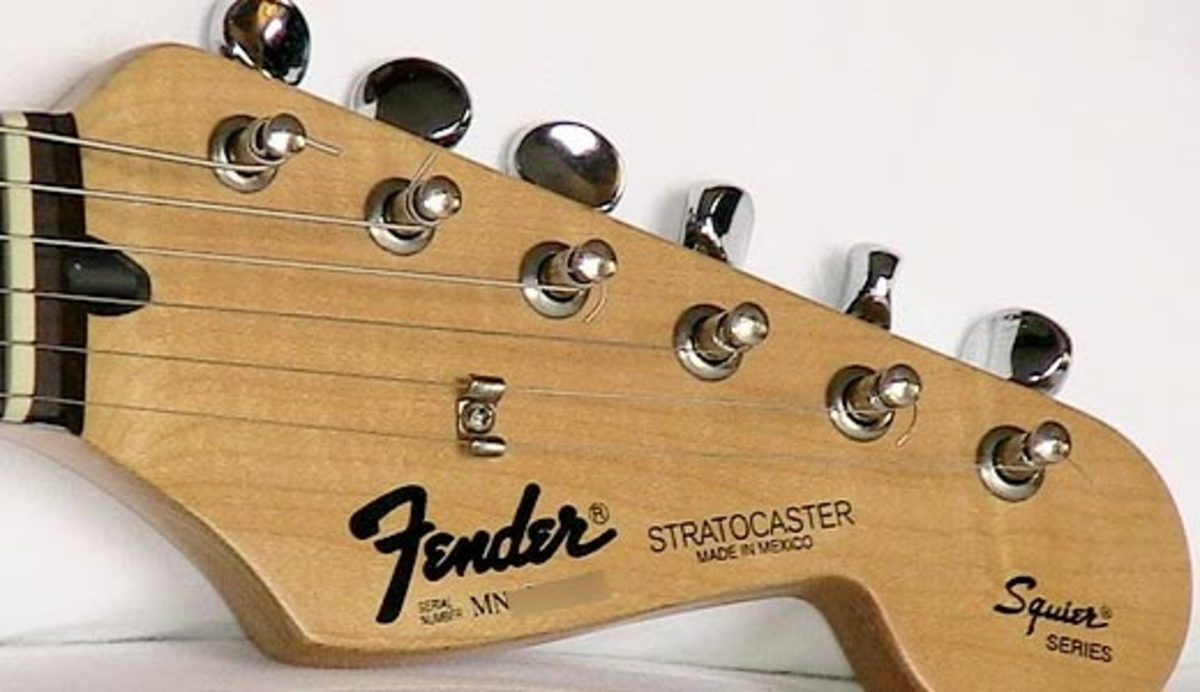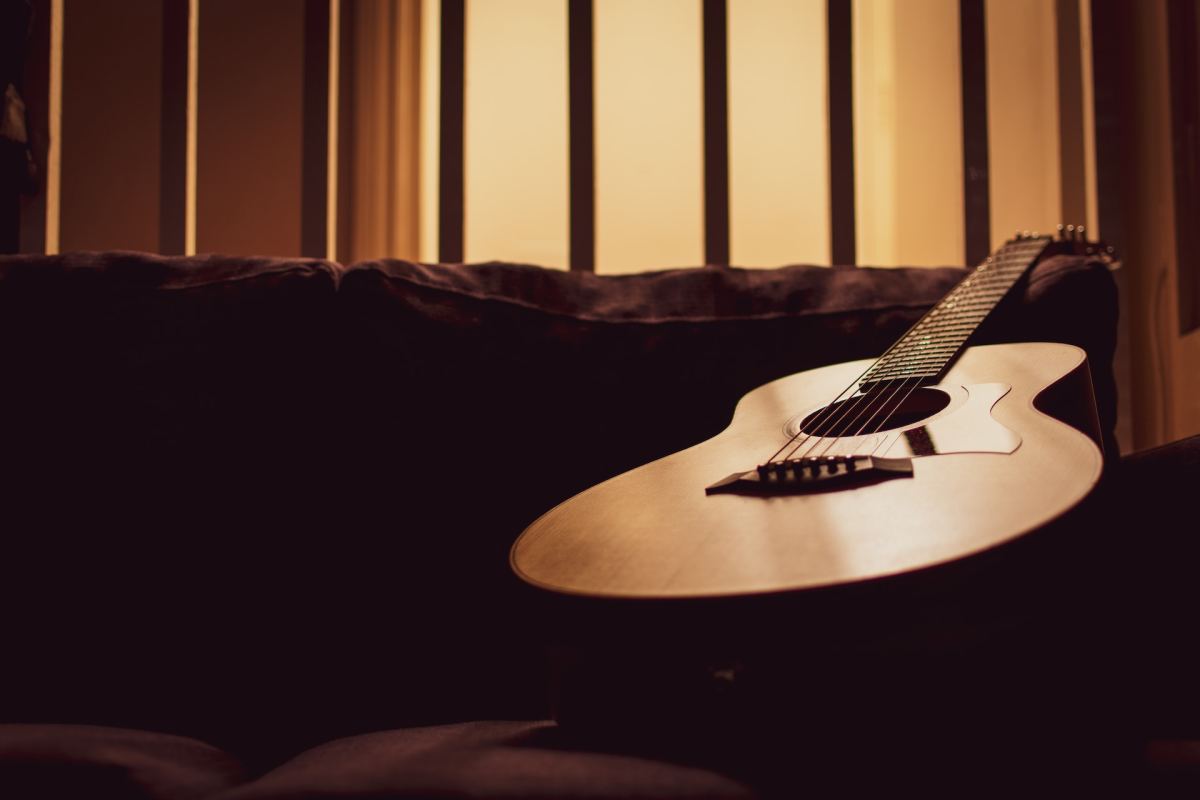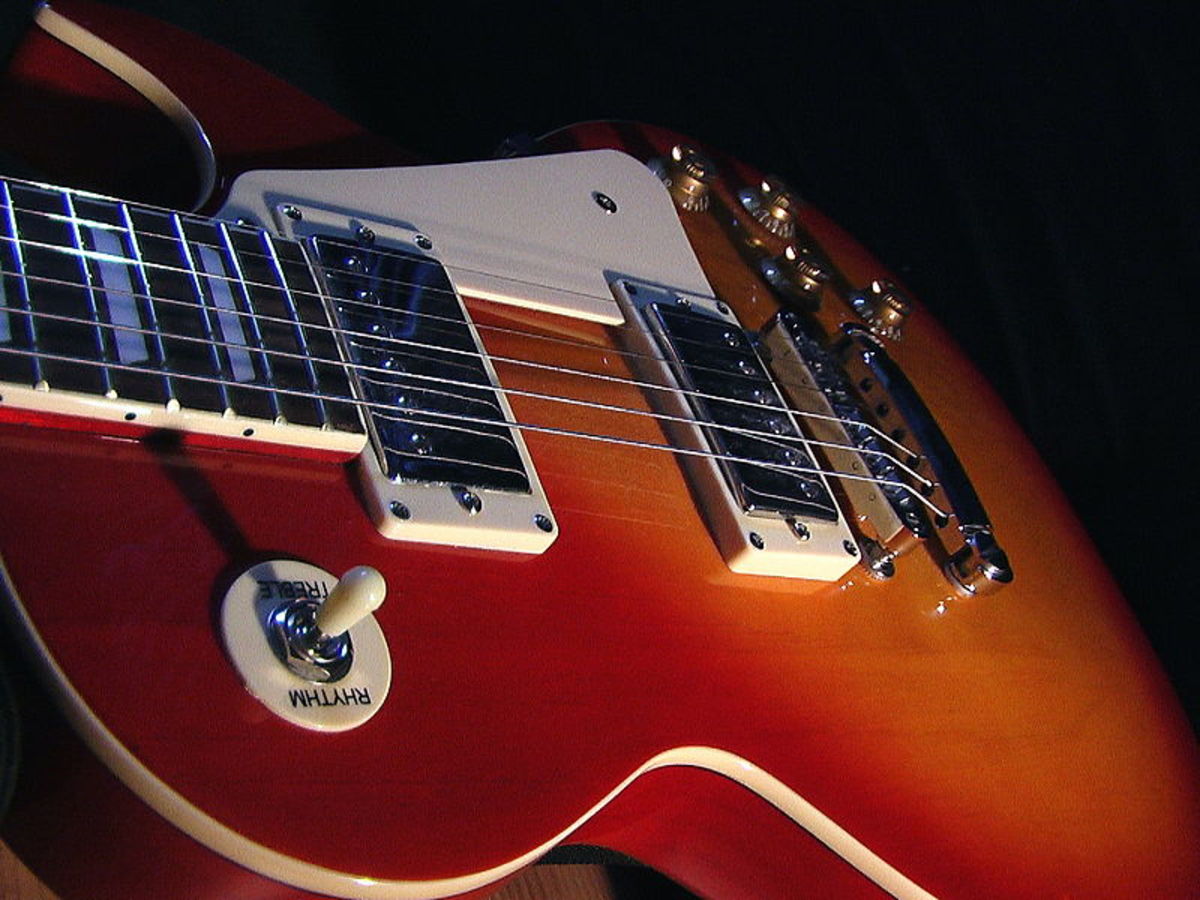Guitar Lesson, Music Theory
Guitar Chord types
This article may help you with guitar chords, general music theory, and also keyboard and piano.
Chord naming works like this - first part establishes the pitch (alphabetical name) - and whether the chord is major or minor.
- If it's major, it will just be called by a note name by default C, F, G etc
- If it's minor it will be followed by a small m. Cm, Fm, Gm, etc
The second part tells you about any added notes, or intervals. These are named numerically from the note name, you just count up the notes of the scale.
Examples: Cm7, D7, E9, G maj7
Intervals 2-7 are commonly found, but you can continue up into the next octave, which means going beyond 8 to 9, 11, and 13. To understand these intervals, just subtract 8 - so 2 and 9 are the same note, 6 and 13 are the same note.
Here are some examples from the key of C:
- C add 2 = C major, add note 2 from the scale ( C D E F G A B C ) - add a D note.
- C sus 4 = C major, add an F
- C6 = C major, add 6th (A)
- C maj7 = C major, add B (maj7 interval)
- C7 = C major, add flat 7th (Bb)
These intervals can be flat or sharp too, which covers all the semitone intervals - one fret on the guitar is a semitone.
Why add intervals? Often a plain major or minor chord would work fine, and can be used if you don't know the fancy chords, or can't make the change in time. But more complex chords just make everything sound better.
Chord types and intervals
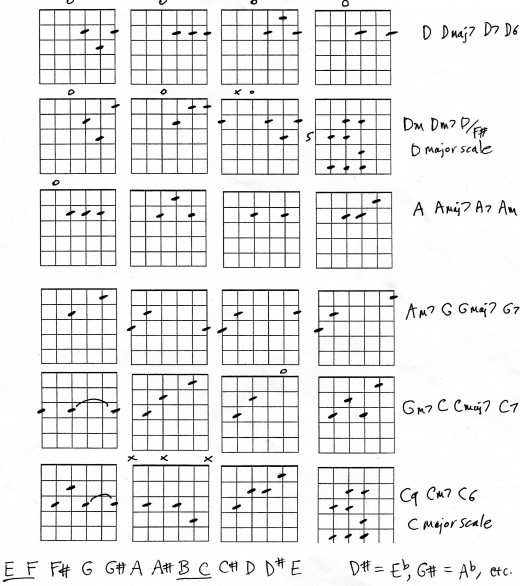
Chord types
Looking at the chart of chord forms - the first line shows D, and variants on D chords that you will commonly find in all rock and pop songs. All the action here takes place on string 2 - the note will go down one step at a time, from D, the tonic or home note.
- You need three different notes to make a chord. For D major you need D, F sharp and A
- For D maj7, same notes but add a C sharp note
- For D7, same again, but you add a 7th, a C note
- For D6, same again, add a B note (B is the 6th up from D)
- You can apply this logic to all other major chords
- The first three chords sound like Something, last chord D6 is used in The Fool on The Hill - both great Beatles songs.
- Major and Minor chords are 3-note chords. All the others are 4-note chords - that is, four different notes, some of which are doubled in many guitar chord shapes.
- General rule - four note chords always sound better, and can be used instead of plain major and minor chords.
Chord pictures, line 2
Now we are looking at minor chord forms, Dm and Dm7. These are interchangable to a large extent. Note that Dm7 contains a C note, the 7 interval, just as D7 did previously.
- D/F sharp is a chord inversion.
- A chord inversion is when you use the same notes, but change the order around, so there is a different bass note at the bottom of the chord.
- Often used to connect chords, in this case, G and Em.
D major scale
The D major scale is shown. Start with fret 5 on string 5 (D) and end at fret 7 on string 3. This scale will fit with the D major chords, but not the Dm shapes.
At the end, the same scale shape is shown for C major, exactly the same pattern, but two frets lower. You can play all the scales in this manner, shifting the shape up or down the fretboard, and keeping the same fingering pattern too. An advantage over playing piano, where the shape changes all the time.
Line 3
Here we are looking at A chords, and variations. Here, all the action takes place on string 3 and just like the D examples, it involves the tonic note going down one step at a time.
- A is shown, just play the middle 4 strings
- A maj7 is the same chord, with a G sharp note added
- A7 is the same again, but with a G added instead.
- Am7 is an Am chord, with a G added, the 7 interval.
More examples
Next, some G chords, Gm7, and some C chords.
The G maj7 chord can be played more easily than this, it's shown here to make more sense of the theory. The Gm7 chord could be a normal barre shape, but this version with your thumb covering string 6 is very useful and less tiring to play.
The C chords - C Cmaj7, C7 are again the chord sequence used in Something.
C9 is just C7 with an added 9th note, D. It will often sound better than a C7 chord, especially in blues tunes.
Cm7 is shown as an alternative to the barre chord shape - just make sure you only hear the three notes shown, and mute the others.
- At the end is the sequence of notes. This sequence really needs to be memorized - if you don't do this, in the long term it will waste a lot of time.
- This can be played on strings 1 and 6 on the guitar, F is at fret 1, F sharp at fret 2, G is at fret 3, etc.
- The sequence of notes is the same all over the guitar fretboard - for instance, you could start at fret 5 on string 2 which is an E note.
- Sharp names could be replaced by flat names as shown.
- All the notes are two frets apart, except for E and F, and B and C, which are only one fret apart.
- Maybe stating the obvious - but the note name order is the same on all instruments, and the same chord theory can be applied to piano and keyboard and vocals.
- The chart below for barre chords should help in finding where the notes are. Usually, learning the note sequence on string 1 and string 6 is a good idea, because they are identical and important for finding your place on the neck for barre chords.
Barre chords, moving shapes up the neck.
